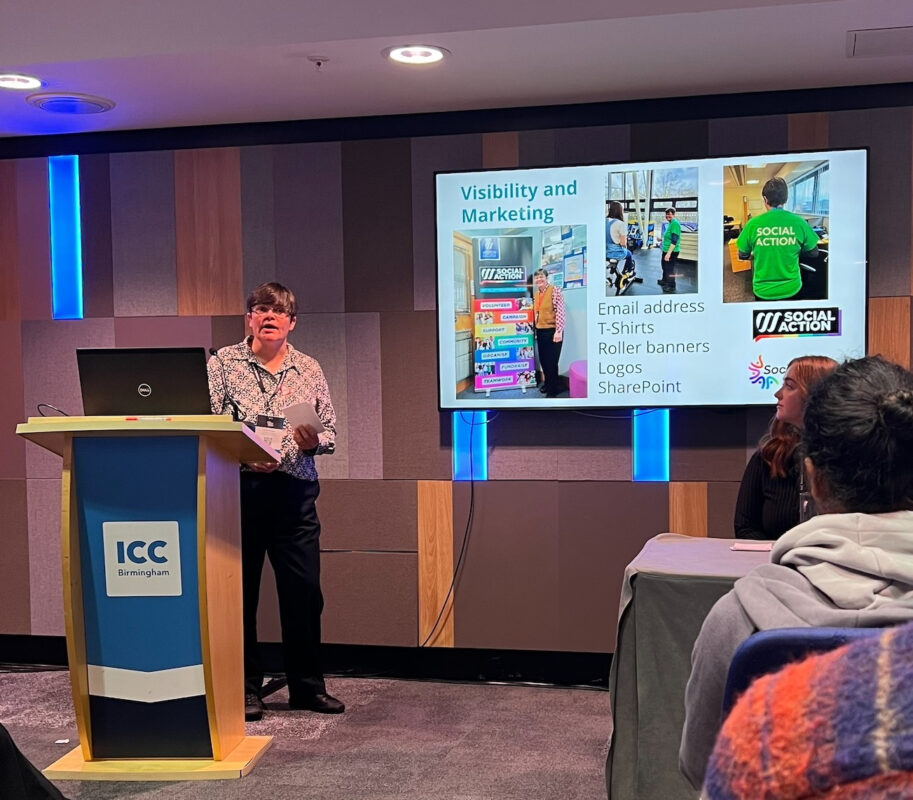Nurturing Attitude and Aptitude: What does it mean to be apprenticeship ready?

As a MA. ed SEND Professional invested in education and career development, I understand the importance of preparing students for their transition from school to the professional world. Beyond academic achievements, it is crucial to recognize and foster the appropriate attitude and aptitude that will contribute to their success in their chosen career paths. In this Article post, we will explore key strategies that educators, parents, and students can employ to nurture these essential qualities.
Keep in mind that the specific requirements for being apprenticeship ready can vary depending on the industry, the organization offering the apprenticeship, and the country or region where the program is being conducted. It’s always a good idea to research the apprenticeship program youth are interested in and understand the specific qualifications and expectations they have.
Preparing students for the transition from school to the professional world goes beyond academic achievements. It involves recognizing and fostering the appropriate attitude and aptitude that will contribute to their success in their chosen career paths. In this blog post, we will explore key strategies for educators, parents, and students to nurture these essential qualities.
Being apprenticeship ready means that you possess the necessary skills, qualifications, and attitudes to succeed in an apprenticeship program. It typically involves a combination of technical knowledge, practical abilities, and personal qualities that make you a suitable candidate for an apprenticeship in a specific field or industry.
Here are some key aspects of being apprenticeship ready:
Educational Requirements:
You should have met the educational prerequisites for the apprenticeship, which could include a certain level of formal education, such as a high school diploma or equivalent. Some apprenticeships may have additional requirements, such as specific subjects or grades.
Technical Skills:
Depending on the apprenticeship, you may need to demonstrate a basic understanding of the technical skills relevant to the industry. This could include proficiency in areas such as coding, plumbing, electrical work, carpentry, or any other specialized skills required for the apprenticeship program.
Work Ethic:
Employers look for candidates with a strong work ethic and a willingness to learn. Being apprenticeship ready means showing dedication, reliability, and the ability to work well in a team. Demonstrating a positive attitude, adaptability, and a commitment to continuous improvement is also important.
Communication and Interpersonal Skills:
Effective communication is essential in any workplace. Being able to articulate your thoughts clearly, listen actively, and collaborate with colleagues demonstrates that you are ready for an apprenticeship. Good interpersonal skills, including teamwork, problem-solving, and conflict resolution, are highly valued.
Initiative and Motivation:
An apprenticeship requires a proactive approach to learning. Being apprenticeship ready means showing initiative, taking responsibility for your own development, and being motivated to acquire new knowledge and skills. Employers appreciate individuals who show enthusiasm for the industry and a genuine interest in the work.
Professionalism:
Demonstrating professionalism is crucial in an apprenticeship setting. This includes being punctual, dressing appropriately, and adhering to workplace policies and guidelines. Showing respect for colleagues, supervisors, and customers is essential to being apprenticeship ready.
Awareness of Health and Safety:
Understanding and prioritizing health and safety measures is vital in many apprenticeships, especially those involving physical labour or hazardous environments. Being aware of safety protocols, following instructions, and taking precautions to protect yourself and others demonstrates your readiness for the apprenticeship.
Self-Reflection and Exploration:
Encouraging students to embark on a journey of self-reflection and exploration is a vital first step. By helping them identify their interests, strengths, and passions, educators and parents can guide students towards careers that align with their natural inclinations. Career counselling, vocational assessments, and exposure to various industries can aid in this process, enabling students to make informed decisions about their future paths.
Mentorship and Guidance:
Mentorship plays a crucial role in shaping students’ attitudes and aptitudes. Through interactions with mentors and professionals in their fields of interest, students gain invaluable insights, learn from real-world experiences, and receive guidance on developing the right mindset and skill set. Mentors can also help students set realistic goals and develop action plans to achieve them, providing ongoing support and encouragement.
Experiential Learning:
Experiential learning bridges the gap between theory and practice, empowering students with hands-on experiences. By integrating real-world scenarios into the curriculum, organizing internships, job shadowing opportunities, or industry visits, students gain practical exposure and a deeper understanding of their desired career paths. This approach fosters the development of relevant skills, instils a sense of professional responsibility, and helps students navigate the demands and expectations of their chosen fields.
Skill Development:
In addition to specialized knowledge, students require transferable skills that are vital across various industries. Communication, problem-solving, critical thinking, teamwork, adaptability, and digital literacy are examples of such skills. By incorporating skill-building activities and workshops into the curriculum, educators can equip students with these competencies, enhancing their employability and adaptability in a rapidly changing job market.
Encouraging a Growth Mindset:
A growth mindset is a key factor in shaping students’ attitudes and aptitudes. By fostering a belief in continuous learning, resilience, and the capacity for improvement, educators and parents can instil the motivation and determination necessary for success. Encouraging students to embrace challenges, learn from failures, and view setbacks as opportunities for growth helps them develop the perseverance and resilience required in their careers.
Parental Involvement:
Parents and guardians play a critical role in recognizing and fostering their child’s attitude and aptitude. Establishing open lines of communication with educators and students is essential. Parents can provide support by actively participating in discussions about interests, aspirations, and goals. By offering resources and information on different career paths, education options, and opportunities available to students, parents empower their children to make well-informed decisions about their future.
Personalized Education and Career Planning:
Recognizing that each student is unique, personalized education and career planning is crucial. By tailoring educational experiences to individual strengths, interests, and goals, educators can guide students effectively. Assisting students in selecting appropriate courses, engaging in relevant extracurricular activities, and exploring career options ensures that their academic pursuits align with their desired career paths.
Continuous Assessment and Feedback:
Regular assessments, both academically and in terms of attitude and aptitude, provide valuable feedback for students. Constructive feedback helps students understand their strengths, identify areas for improvement, and make informed decisions about their future. By offering ongoing support and guidance, educators and parents can contribute to students’ growth and development.
Are there differences in FE and HE apprenticeship ready?
Yes, there are differences between being apprenticeship ready in Further Education (FE) and Higher Education (HE) contexts. The distinctions arise from the level of education, the types of apprenticeships offered, and the expectations of the respective programs.
Here are some key differences:
Educational Requirements:
In FE apprenticeships, the educational prerequisites may vary, but they generally require a minimum level of formal education, such as completing compulsory education (secondary school). HE apprenticeships, on the other hand, often have higher educational requirements, such as holding a higher education qualification (e.g., a bachelor’s degree) or having completed a certain number of higher education credits.
Technical Skills and Knowledge:
FE apprenticeships typically focus on developing technical skills and practical knowledge relevant to specific industries or trades. These programs often cater to entry-level positions and provide vocational training. In HE apprenticeships, there may be a greater emphasis on advanced technical skills, research, innovation, and more specialized knowledge related to the field of study.
Academic Rigor:
HE apprenticeships generally have a higher level of academic rigor compared to FE apprenticeships. HE apprenticeships often integrate theoretical studies and research with practical training, blending academic knowledge and industry-specific skills. This is particularly true for apprenticeships at the postgraduate level.
Duration and Level of Apprenticeships:
FE apprenticeships typically have a shorter duration compared to HE apprenticeships. FE apprenticeships can range from several months to a few years, while HE apprenticeships may last for several years, especially at the undergraduate and postgraduate levels. HE apprenticeships often provide a deeper level of training and professional development.
Career Progression:
The career progression opportunities may differ between FE and HE apprenticeships. FE apprenticeships often focus on developing practical skills and qualifications that enable apprentices to enter the workforce directly after completion. HE apprenticeships, especially at the higher levels, may provide a pathway to more advanced positions, research opportunities, or managerial roles within the industry.
Entry Criteria:
HE apprenticeships may have more stringent entry criteria compared to FE apprenticeships. This could include specific academic qualifications, prerequisite subjects or grades, and sometimes relevant work experience in the field. HE apprenticeships often require a higher level of academic achievement and may have a competitive application process.
While differences can co- exist, it’s important to note that there can be variations in the structure and entry requirements of apprenticeships within both FE and HE. The specific details of each apprenticeship program should be considered when determining the expectations and readiness criteria for each context. Ideally a strengths-based Advice and guidance session or sessions dependant on the individuals’ circumstances and needs is highly recommended prior to the learner contract, thus likely a completion of the term of contact is likely to occur as the training start and ends with a strengths based, person centred and holistic approach. Very rarely is this occurring at the moment, with SEND students most affected.
Preparing students for successful careers requires a comprehensive approach that goes beyond traditional academic achievements. By recognizing and fostering the appropriate attitude and aptitude, educators, parents, and students can navigate the complexities of the professional world more effectively. Through self-reflection, mentorship, experiential learning, skill development, fostering a growth mindset, parental involvement, personalized education, and continuous assessment, students can be guided toward fulfilling careers that align with their passions and strengths.
By Gavin Hoole
This is part one of a two part series.











Responses